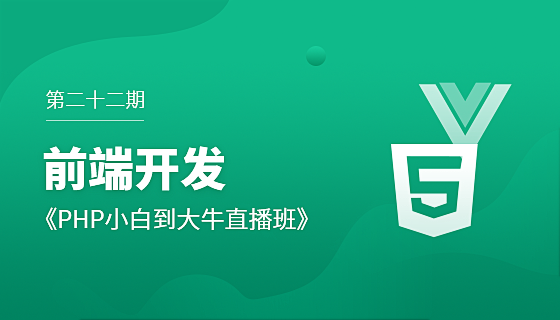
Course2857
Course Introduction:Course introduction: 1. Cross-domain processing, token management, route interception; 2. Real interface debugging, API layer encapsulation; 3. Secondary encapsulation of Echarts and paging components; 4. Vue packaging optimization and answers to common problems.

Course1795
Course Introduction:Apipost is an API R&D collaboration platform that integrates API design, API debugging, API documentation, and automated testing. It supports grpc, http, websocket, socketio, and socketjs type interface debugging, and supports privatized deployment. Before formally learning ApiPost, you must understand some related concepts, development models, and professional terminology. Apipost official website: https://www.apipost.cn

Course5521
Course Introduction:(Consult WeChat: phpcn01) The comprehensive practical course aims to consolidate the learning results of the first two stages, achieve flexible application of front-end and PHP core knowledge points, complete your own projects through practical training, and provide guidance on online implementation. Comprehensive practical key practical courses include: social e-commerce system backend development, product management, payment/order management, customer management, distribution/coupon system design, the entire WeChat/Alipay payment process, Alibaba Cloud/Pagoda operation and maintenance, and project online operation. .....

Course5172
Course Introduction:(Consult WeChat: phpcn01) Starting from scratch, you can solve conventional business logic, operate MySQL with PHP to add, delete, modify, and query, display dynamic website data, master the MVC framework, master the basics of the ThinkPHP6 framework, and learn and flexibly master all knowledge involved in PHP development. point.

Course8713
Course Introduction:(Consult WeChat: phpcn01) The learning objectives of the front-end development part of the 22nd issue of PHP Chinese website: 1. HTML5/CSS3; 2. JavaScript/ES6; 3. Node basics; 4. Vue3 basics and advanced; 5. Mobile mall/ Website background homepage layout; 6. Automatic calculation of tabs/carousels/shopping carts...
How to pass json object from web api in javascript to rest of project
2023-09-15 21:01:02 0 1 301
Nodejs: Correct way to return non-HTML data to browser?
2023-09-15 16:04:49 0 1 736
Regular expressions involving AND in python
2023-09-14 16:30:41 0 1 216
Rails: Truncate HTML tag text while preserving link text during database column truncation
2023-09-12 19:18:11 0 1 235
Convert string to date in Laravel
2023-09-07 11:41:49 0 1 338

Course Introduction:Learn the distributed cache and in-memory database of Go language. Since its birth, Go language has quickly won the favor of developers with its simplicity and efficiency. Its concurrency and high performance make it an ideal language for building distributed systems. With the rapid development of Internet applications, distributed cache and in-memory database, as important components to improve system performance, have gradually become a hot topic of concern to developers. This article will be based on the Go language and explore the relevant knowledge of distributed cache and in-memory database. 1. Concept and principles of distributed cache
2023-11-30 comment 0461

Course Introduction:With the development of the Internet, a large number of applications have adopted APIs as a way to interact with clients. In the implementation of API, optimization of cache and database are inevitable issues. Especially in distributed systems, how to handle cache and database access is even more important. This article will discuss how PHP handles distributed cache and database issues when implementing APIs. 1. Distributed cache In a distributed system, multiple nodes need to share cached data, so distributed cache needs to be used to ensure data consistency and high availability. 1
2023-06-17 comment 0487

Course Introduction:How to implement a high-performance distributed database cache system in Go language development Introduction: With the rapid development of the Internet, the amount of data and access continues to increase, and the requirements for database performance are also getting higher and higher. The distributed database cache system is a solution to improve database access performance. It caches data in the database in memory to provide faster read and write operations. This article will introduce how to use Go language to develop a high-performance distributed database cache system. Choosing an Appropriate Cache Storage Engine When developing a distributed database cache system, choose
2023-06-30 comment 0890

Course Introduction:How to implement a highly available distributed cache database in Go language development Summary: Distributed cache database is one of the commonly used components in modern application development. It can increase the speed of data reading and reduce the pressure on the database server. This article will introduce how to use Go language to develop a highly available distributed cache database system, including system architecture design, data sharding and data consistency, load balancing, etc. Introduction With the continuous expansion of the scale of Internet applications, the traditional single database storage method can no longer meet the needs of high concurrency and
2023-06-30 comment 0688

Course Introduction:How to implement high-performance distributed database caching in Go language development. In today's high-concurrency environment of the Internet, fast data reading and storage is one of the important factors in achieving high-performance applications. As a common solution, distributed database cache can greatly improve the performance and scalability of the system. This article will introduce how to use Go language to develop distributed database cache to achieve high-performance systems. 1. Understand the basic principles of distributed caching. Distributed database caching refers to loading data from the database into the cache to speed up data processing.
2023-06-29 comment 0743